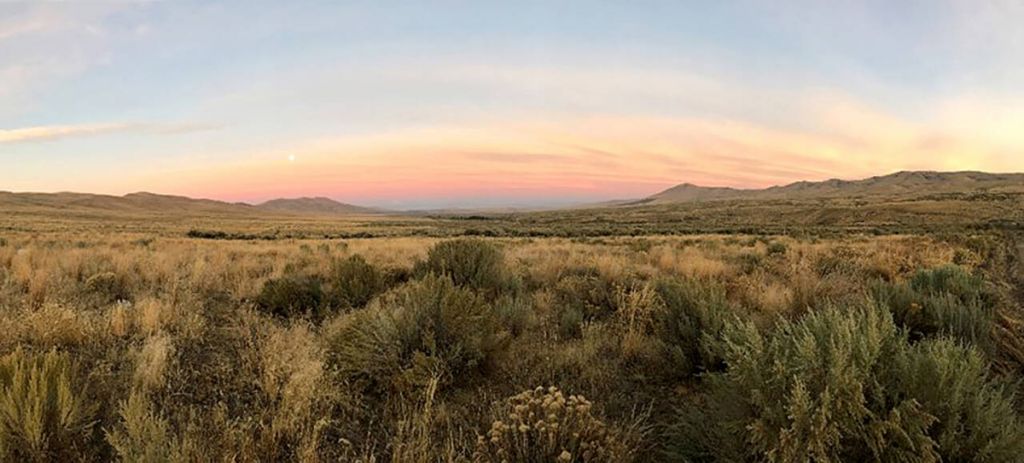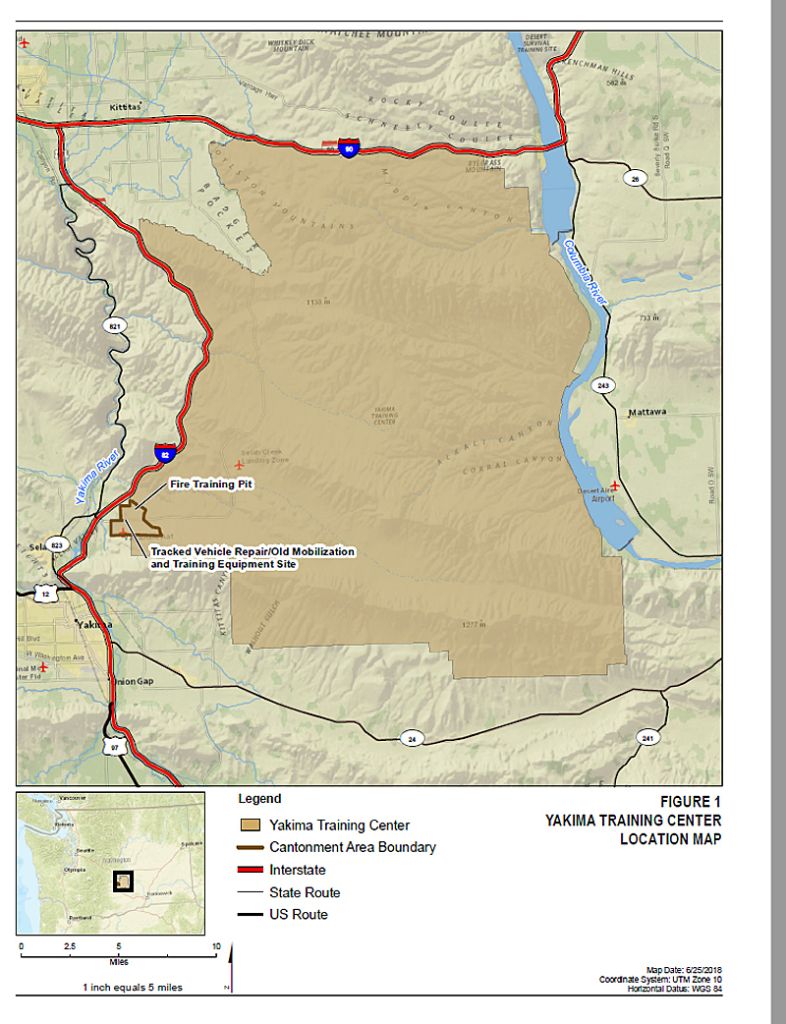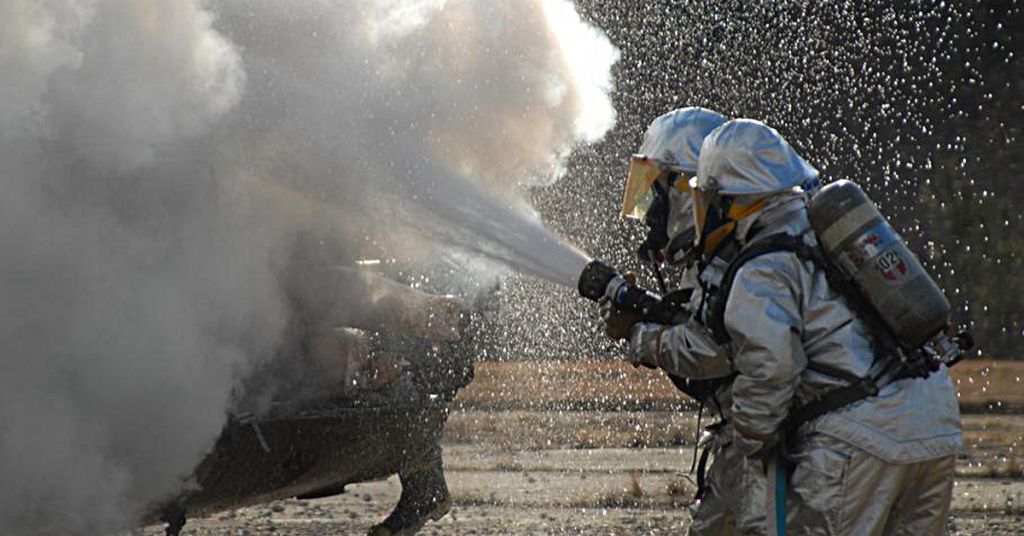The Department of Ecology has sent the U.S. Army a legal demand to clean a training center that contaminated residential wells with “forever chemicals”

Bad to the bone: The U.S. Army’s Yakima Training Center contains a Multi-Purpose Range Complex and a Shoot House that allows service members to train collectively or individually. Also PFAS. Photo: U.S. Army
Update: On March 14, 2023, the EPA announced it was declaring two of the most common PFAS “forever chemicals”—PFOA and PFOS—as CERCLA hazardous substances. The new regulations limit the allowable level of PFAS in public drinking water systems to four parts per trillion, the lowest current measurable amount, and more stringent than Washington state’s advisory limit of 25 parts per trillion. The EPA also set limits for other PFAS compounds and announced $10 billion in funding from the Bipartisan Infrastructure Law to help clean up PFAS contamination.
By Andrew Engelson. February 15, 2023. On Feb. 1, the Washington Department of Ecology did something it rarely does. The government agency issued an enforcement order against the U.S. Army.
The order requires the Army to clean up sites at its Yakima Training Center in central Washington that have contaminated nearby private wells with per- and polyfluoroalkyl substances (PFAS).
PFAS, otherwise known as “forever chemicals,” are found in firefighting foams the Army used for decades at the training site. The chemicals don’t break down in nature and can cause a variety of health problems including liver damage and an increased risk of osteoporosis and some types of cancer.
In 2020, the Army found that 117 households near Selah, Wash., had elevated levels of PFAS.
As previously reported by Columbia Insight, the Army and Ecology have been in a dispute over a cleanup plan, as well as over the standard for unsafe levels of PFAS in drinking water. The Army sets a limit of 70 parts per trillion, while Washington State recommends cleanup above 25 parts per trillion.
“This order requires the Army to do a thorough investigation, and develop cleanup plans for all the contaminated areas on the base, including those affected by PFAS,” Greg Caron, regional manager for hazardous waste at the Department of Ecology, told Columbia Insight. “PFAS is the most imminent one in terms of human health and environmental threat.”

U.S. Army Yakima Training Center map from Washington Department of Ecology
Caron said it’s relatively rare for Ecology to issue an enforcement order—usually the agency negotiates with property owners to create a voluntary cleanup plan.
But the Army’s refusal to respond to repeated entreaties forced Ecology to take action, he said.
“This is an emergent issue that requires decisive action,” said Ecology Director Laura Watson in a press release. “Issuing an enforcement order is necessary to hold the Army accountable, as well as ensure public input on future cleanup actions.”
Public comment period
On Feb. 2, Ecology and the state’s Department of Health held their first public meeting at the Civic Center in Selah, Wash., as part of Ecology’s public process for drafting a cleanup plan for the Training Center and surrounding wells.
About 60 people attended the meeting.
“We crafted that meeting as a listening session, just to hear the community’s concerns,” Caron said. “And we collected an awful lot of feedback.”
At the meeting, the Yakima County Health District announced it would make in-home water filters that can remove some (but not all) PFAS contamination available free of charge to the 30 or so households that are not receiving bottled water from the Army.
The Army has agreed to provide drinking water to the 87 households that are above the federal level, but not to those above the state level.
Both state and federal limits on PFAS are only advisory. For more than a year the EPA has been contemplating whether to designate the two most common PFAS chemicals, PFOS and PFOA, as hazardous substances covered by CERCLA (Superfund) legislation.
In recent years, more than 30 states across the country have begun addressing mounting PFAS issues with laws designed to crack down on their use and enforce cleanup efforts.
The Department of Ecology is seeking a first round of public comments on cleanup plans for the Training Center until March 22. More information is available here.











Hello Andrew, large scale solar sites are being promoted by Governor Inslee across Washington state. PFAS chemical is in solar panels. Lithium-ion batteries storage systems are used at solar sites. When they spontaneously combust, and fire fighters respond they use foam to fight the fire. That foam contains PFAS it contaminates the ground and water. Foam is commonly used but the environmental damages are never addressed. With Governor Inslee prompting the siting of solar projects primarily on the east side with millions of big solar panels containing PFAS and this chemical is released into the environment our state will multiple PFAS superfund cleanup sites. This problem is being ignore by the governor. He must know solar panels are hazardous as it states that in RCW 70a.510.010 #5(iii). Klickitat County has the largest solar site in the state Lund Hill it alone contains 515,350 panels. The next site is Bluebird and additional land is leased for a third site all near Bickleton. Possibly 1.5 million solar panels. Four solar corporations plan multiple solar sites surrounding Goldendale. Will PFAS be in our water? This is an important issue and please consider a report on this. Thanks, Greg Wagner C.E.A.S.E. citizens educated about solar energy. cease2020.org